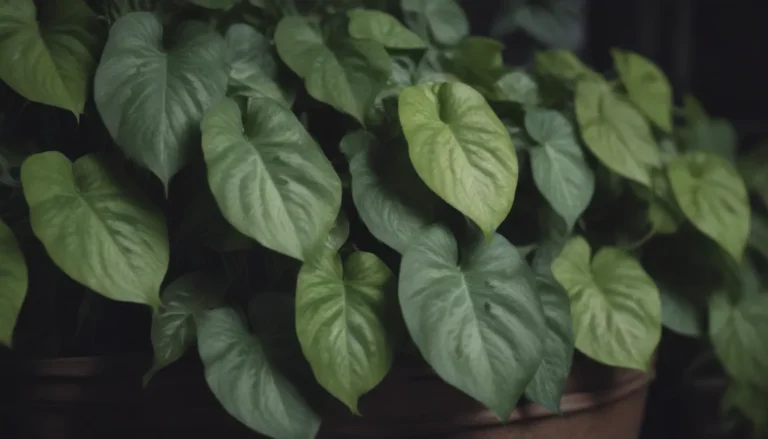Complete Guide on Growing and Caring for Cordyline (Ti) Plants

Welcome to our comprehensive guide on how to grow and care for Cordyline plants, also known as Ti plants. Cordyline is a versatile decorative plant that can thrive both indoors and outdoors, depending on the climate it is grown in. With its leathery, spikey leaves available in vibrant colors such as green, red, yellow, white, purple, and purplish-red, Cordyline adds a pop of color to any space.
In this guide, we will provide you with valuable information on the different aspects of caring for Cordyline plants, from light and water requirements to common pests and diseases. Let’s dive in and learn how to ensure your Cordyline plant thrives and flourishes.
Understanding Cordyline Care
Cordyline plants are low-maintenance, evergreen shrubs that can bring color to both indoor and outdoor gardens. Originating from Greek, the name “Cordyline” translates to “club” in reference to the plant’s robust root system. There are various species of Cordyline available, each with its own unique characteristics and care requirements.
Light
Cordyline plants prefer bright light, but it is essential to provide the right amount of light based on the plant’s leaf color. Green-leaved Cordyline thrives in direct sunlight, while varieties with colored leaves may prefer bright indirect or filtered sunlight.
Soil
Ensure that your Cordyline plant is potted in a rich, well-drained potting mix with a pH of 6-6.5. Proper soil drainage is essential for the health and growth of your plant.
Water
Water your Cordyline plant when the soil surface feels dry. Water thoroughly until it starts to drain out of the pot’s drainage holes. Avoid overwatering to prevent root rot.
Fertilizer
Feed your Cordyline plant with a slow-release fertilizer in the spring and a liquid 20-20-20 fertilizer at half-strength weekly during the growing season. Avoid fertilizing during the winter months.
Temperature and Humidity
Cordyline plants thrive in temperatures above 62 degrees Fahrenheit and prefer a high humidity environment. Avoid placing your plant near cold drafts, as they prefer tropical conditions.
Types of Cordyline
Cordyline plants come in various exciting varieties, each with its unique colors and characteristics. Some popular types include:
- ‘Calypso Queen’ (Cordyline fruticosa)
- ‘Oahu Rainbow’ (Cordyline fruticosa)
- ‘Hawaiian Boy’ (Cordyline fruticosa)
- ‘Red Star’ (Cordyline australis)
- ‘Chocolate Queen’ (Cordyline terminalis)
Explore different Cordyline varieties to add diversity to your indoor or outdoor garden.
Pruning and Propagating Cordyline
To keep your Cordyline plant healthy and vibrant, regular pruning is necessary. Trim back individual stems in a staggered pattern to maintain a full and bushy appearance. Additionally, you can propagate Cordyline plants using stem cuttings. Follow these steps to propagate your Cordyline successfully:
- Take stem cuttings from a healthy, mature plant.
- Plant the cuttings in a well-draining potting mix.
- Keep the soil consistently moist but not waterlogged.
- Place the cuttings in a warm, bright location to promote root growth.
How to Grow Cordyline From Seeds
You can also grow Cordyline plants from seeds harvested from ripened berries. Plant the seeds in a suitable potting mix and provide the necessary light and water requirements for successful germination and growth.
Potting and Repotting Cordyline Plants
Cordyline plants thrive in pots, making them an excellent choice for indoor plant enthusiasts. If you live in a non-tropical climate, you can bring your Cordyline indoors during the winter months. Repot your plant every few years to accommodate root growth. Choose a tall pot with adequate drainage holes to support the plant’s root system.
Overwintering Tips for Cordyline
For Cordyline plants in cooler climates, protect them during the winter months by tying up the leaves with twine. Ensure the plant is secured in windy conditions to prevent damage from the weather. Proper care during the colder months will help your Cordyline thrive when the temperatures rise again.
Common Pests and Plant Diseases
Cordyline plants are susceptible to common pests and diseases, including scale insects, spider mites, mealybugs, bacterial leaf spot, and root rot. Treat infestations with neem oil or insecticidal soap and prevent diseases by ensuring proper plant care and maintenance.
Troubleshooting Common Problems With Cordyline Plants
If you encounter issues with your Cordyline plant, such as browning tips or yellowing leaves, follow these tips to address the problem:
- Browning Tips: Check for underwatering, overwatering, root rot, or fluoride sensitivity. Use distilled water or rainwater to prevent fluoride-related issues.
- Yellowing Leaves: Ensure proper watering, light exposure, and temperature control. Check for root rot if lower leaves are turning yellow.
In conclusion, caring for Cordyline plants is rewarding and straightforward with the right knowledge and care techniques. By providing adequate light, water, and nutrients, you can enjoy vibrant and healthy Cordyline plants in your indoor or outdoor space. Harness the mystical powers of Cordyline to bring good luck, long life, and lasting love to your home.
Remember to refer to our guide for all your Cordyline care needs, and enjoy the beauty and benefits of these versatile plants in your garden. Happy gardening! 🌿
References:
- Ti-Plant. ASPCA.
- Cordyline – Ti Plant. University of Florida.
- Cordyline terminalis. The University of Vermont.
- “Are Cordylines and Dracaenas the Same?” The International Cordyline Society.





